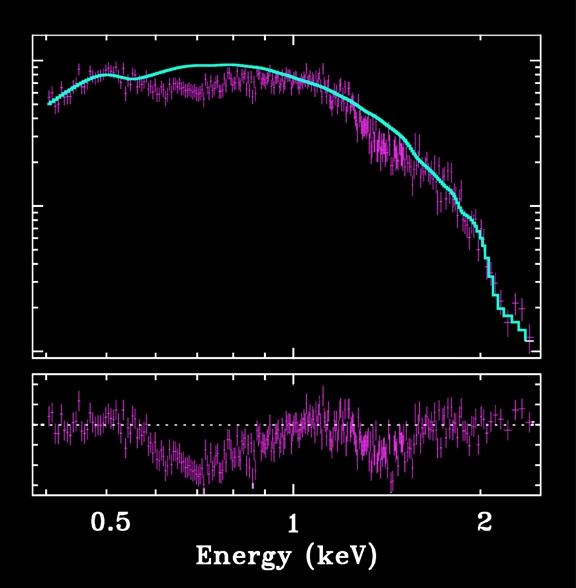
 Credit: CXC/M.Weiss; NASA/PSU/G.Pavlov et al.
Credit: CXC/M.Weiss; NASA/PSU/G.Pavlov et al.
Measuring Neutron Stars
Neutron stars are the compressed remains of exploded stars. They have extremely high densities and extremely high magnetic fields so that they make useful laboratories to test the properties of matter under extreme magnetic and gravitational fields. Neutron stars are expected to be very small (astronomically speaking), only about 10 kilometers in radius, so they are difficult to observe. A major question is to determine what types of matter lies inside a neutron star. A new observation of the neutron star known as 1E 1207.4-5209 by the Chandra X-ray observatory has helped astronomers refine our understanding of the interior of this neutron star. Chandra was able to obtain a measure of the amount of X-rays produced as a function of X-ray energy and found an extraoardinary thing - 2 small dips in the spectrum (shown above) which are interpreted as absorption of X-rays by Helium atoms in the neutron star atmosphere. The location, shape and depth of the dips let astronomers constrain the size to mass ratio of this particular neutron star. They found that the size is constrained to the range 8 to 14 km if the neutron star has the same mass as the sun. Scientists can now use this measurement to compare with theoretical predictions to test models of neutron star interiors.
Last Week *
HEA Dictionary * Archive
* Search HEAPOW
* Education
Each week the HEASARC
brings you new, exciting and beautiful images from X-ray and Gamma ray
astronomy. Check back each week and be sure to check out the HEAPOW archive!
Page Author: Dr. Michael F. Corcoran
Last modified July 2, 2001


